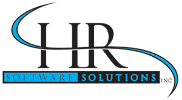Time is money. That adage is especially true in the business world, as companies want to find the most efficient and cost-effective ways to conduct daily operations. When payroll and HR systems are streamlined, for example, an organization can be more profitable.
Human resource departments are in charge of many aspects of a business, but when they can easily become bogged down when manually tracking employees’ time, especially hourly workers.
“If you don’t get time and attendance right, you leave money on the table, either by overpaying people, which is not good for business, or by underpaying people, which makes them tend to leave you,” Thomas Otter, research vice president at Gartner Inc., an analyst group based in Stamford, Connecticut told TechTarget. “It’s one of those areas that has been around for a long time because the reasons why it’s done haven’t changed.”
A survey conducted by Boston-based Nucleus Research Inc. found that companies without automated time and attendance systems tend to overpay their employees 1.2 percent on average.
TechTarget highlighted the transformation of the Aker Philadelphia Shipyard, which implemented an integrated workforce management suite for time and attendance, absence management and time and work data collection. The 1,200-employee company increased its overall efficiency and output by 33 percent and was able to reduce the number of hours worked per tanker by one third.
According to the news source, Aker had 10,000 separate work tasks and 1.2 million labor hours involved in building each ship. It was also crucial for the company to not only monitor worker productivity but also ensure that safety stayed a top priority. Both of these were still manageable with an HR software solution.
By implementing HR systems, organizations across numerous industries can find efficient ways to streamline administrative duties and ensure productivity.

